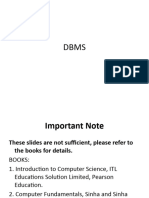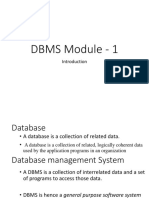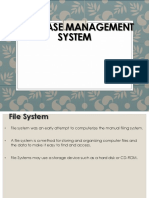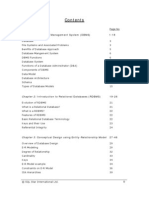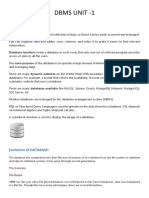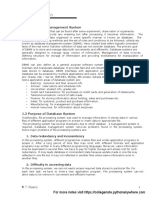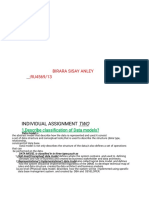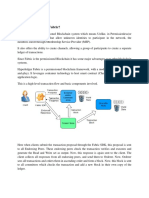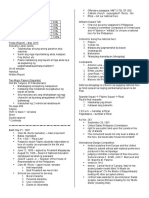0% found this document useful (0 votes)
14 views14 pagesFile System, Problems With File System Unit1
The document outlines the history and evolution of Database Management Systems (DBMS), detailing the transition from early file-based systems to modern relational and NoSQL databases. It discusses the structure and function of file systems, the problems associated with file processing systems, and the various types of data models in DBMS, including conceptual, representational, and physical models. Additionally, it covers data abstraction levels in DBMS, emphasizing the importance of managing and organizing data effectively.
Uploaded by
Priya SureshCopyright
© © All Rights Reserved
We take content rights seriously. If you suspect this is your content, claim it here.
Available Formats
Download as DOCX, PDF, TXT or read online on Scribd
0% found this document useful (0 votes)
14 views14 pagesFile System, Problems With File System Unit1
The document outlines the history and evolution of Database Management Systems (DBMS), detailing the transition from early file-based systems to modern relational and NoSQL databases. It discusses the structure and function of file systems, the problems associated with file processing systems, and the various types of data models in DBMS, including conceptual, representational, and physical models. Additionally, it covers data abstraction levels in DBMS, emphasizing the importance of managing and organizing data effectively.
Uploaded by
Priya SureshCopyright
© © All Rights Reserved
We take content rights seriously. If you suspect this is your content, claim it here.
Available Formats
Download as DOCX, PDF, TXT or read online on Scribd
/ 14








